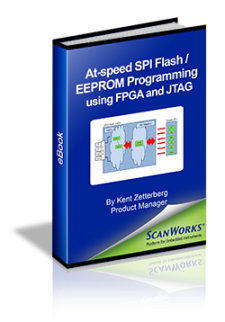Designers and manufacturing engineers face challenges when it comes to programming flash and EEPROM memories that are already soldered to a circuit board. Often, the software or firmware content of these memories has not yet been completed when hardware prototypes are being validated and tested prior to volume manufacturing. As a result, the memories must be programmed and sometimes reprogrammed in-system and as quickly as possible, especially in manufacturing.
A new eBook by ASSET explains the pros and cons of several different methods for programming memory devices connected to the Serial Peripheral Interface (SPI) bus. Each method takes advantage of a Field Programmable Gate Array (FPGA) that is already on the board for functional purposes.
“It’s important to be able to program SPI memory devices in-system because removing a device from a board to program it just takes too long and the memory device is often damaged in the process,” said Kent Zetterberg, product manager at ASSET and author of the eBook. “And once the circuit board design moves into manufacturing, you’ll want to be able to program memory as quickly as possible because in manufacturing, time is money.”
“At-Speed SPI Flash/EEPROM Programming Using FPGA and JTAG” is available now on the ASSET website.
Other informative eBooks, white papers and videos on issues relating to chip, board and system debug, validation and test can be downloaded from the eResources page.


